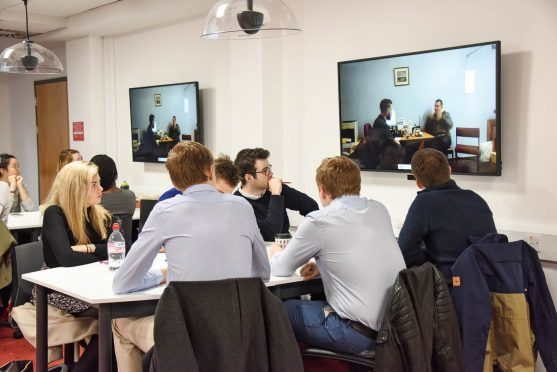Doctors in training at Aberdeen University are using digital technology to watch GP consultations live as part of a drive to encourage more students to work in the struggling sector.
A report by the British Medical Association warned last year that Scotland could be facing a shortage of more than 900 family doctors by 2021.
Aberdeen University’s GP Live project, which uses video streaming software to allow medical students to watch consultations as they happen from the classroom, has been designed to help tackle the upcoming shortfall of doctors in the profession.
Before the scheme, medical students would have to wait until late on in their studies before they were able to sit in on live consultations.
But new technology now allows them to experience the important interactions between doctor and patient at a much earlier stage in their time at university.
The system has been developed by Dr John McKeown, a senior clinical lecturer and GP at Cults Medical Group.
He said: “The biggest appeal for students is that they are seeing consultations that are almost live, and this adds a sense of immediacy that appeals to students who have grown up in an era where digitisation has made learning far more interactive.
“We aim to make the sessions as engaging as possible by discussing the GP’s approach while the consultation takes place – for example, how they communicate, the direction that they take the consultation, and of course their recommended course of action.”
Jamie Weir, spokesman for the north-east patient’s group PACT, said: “A lot of medical students go out to general practice anyway and see it first hand, and sit in with GPs when they’re consulting with patients, so this is a great extension of a system that is already in place.
“We’re due to a real shortage of GPs across Scotland in just a few years, so anything that can help fill these gaps is really good.”
Aberdeen Central MSP Kevin Stewart said: “Aberdeen University has always been ahead of the curve in this field of telemedicine.
“Hopefully this project will lead to many more graduates in medicine entering the GP profession.”
North-east MSP Peter Chapman said: “Given the current shortage of GPs in the north-east, this type of initiative should be broadly welcomed.”
